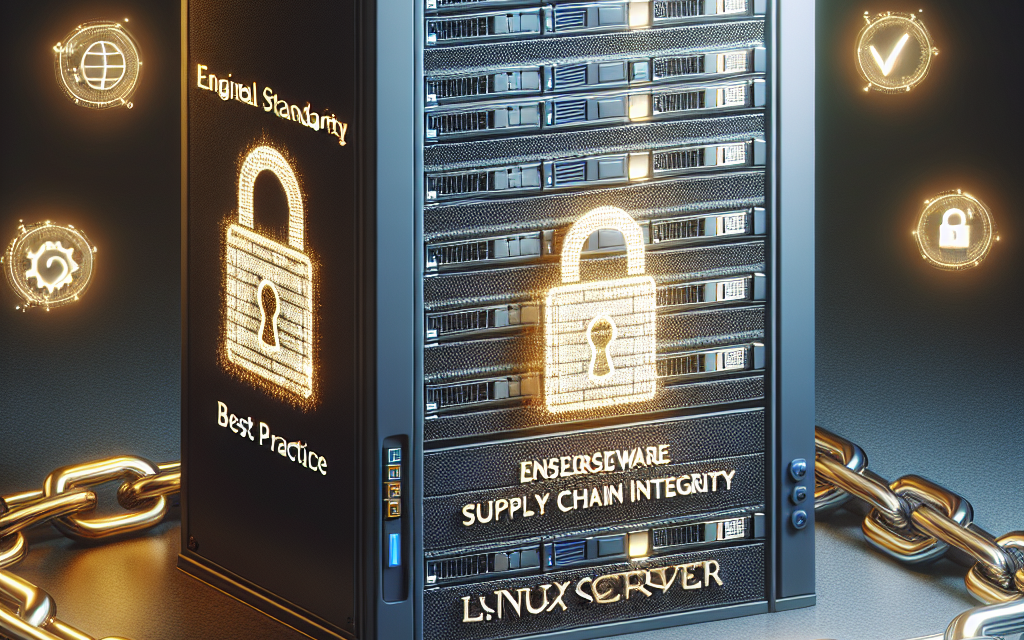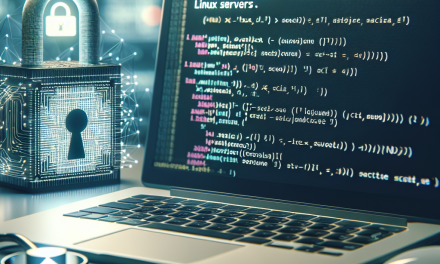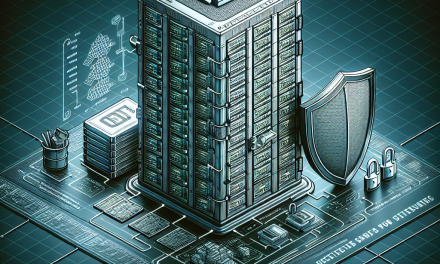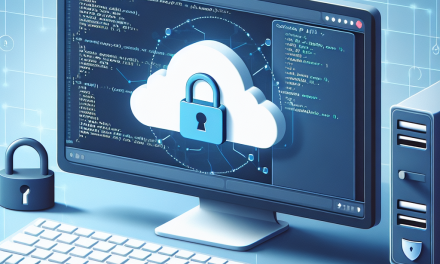In today’s digital landscape, maintaining the integrity of your software supply chain is critical. With the increasing number of cyber threats, especially targeted at vulnerabilities in the software we rely on, it’s imperative to adopt best practices to safeguard your Linux servers. This article aims to provide actionable insights for ensuring software supply chain integrity on Linux systems.
Understanding Software Supply Chain Integrity
Software supply chain integrity refers to the assurance that software components have not been tampered with or compromised during development, distribution, or deployment. A breach in the software supply chain can lead to significant security risks, including data breaches, malware infection, and unauthorized access to systems.
Best Practices for Ensuring Supply Chain Integrity
Here are some essential practices that Linux server administrators can implement to enhance software supply chain integrity:
1. Use Trusted Repositories
Always utilize official repositories provided by Linux distributions (e.g., APT for Debian/Ubuntu, YUM/DNF for CentOS/RHEL). These repositories typically undergo rigorous testing and provide digitally signed packages, reducing the risk of malicious software.
Tip: Set up your systems to only allow package installations from trusted sources. You can configure your package manager by setting priorities or using whitelist approaches.
2. Implement Package Signing Verification
Ensure that all software packages are cryptographically signed by the developer or repository maintainer. Before installing any software, validate checksums or signatures to confirm authenticity.
Command Example:
bash
gpg –verify package.sig package.tar.gz
3. Continual Update and Patch Management
Regularly update all installed software packages to their latest versions. Security patches and updates are crucial in closing vulnerabilities that can be exploited.
Tip: Automate updates while ensuring you monitor them closely to manage compatibility and potential disruptions.
Command Example:
bash
sudo apt update && sudo apt upgrade -y # For Debian-based systems
sudo dnf upgrade –refresh -y # For RHEL-based systems
4. Monitor Software Composition
Use tools that can analyze dependencies in your software when building applications. For Python, tools like pip-audit and for Node.js, consider npm audit. These tools can help in identifying vulnerable packages.
5. Container Security Best Practices
If you’re utilizing containers, follow security best practices:
- Use minimal base images (e.g., Alpine).
- Regularly scan containers for vulnerabilities.
- Employ runtime security monitoring tools to prevent intrusions while containers are in operation.
6. Isolate Critical Systems
Ensure that critical applications and services run in isolated environments. Virtualization, containers, or network segmentation can provide an additional layer of defense.
7. Implement Access Controls
Use strict access controls to limit access to systems and software development environments. Use principles of least privilege (PoLP) and robust authentication methods, such as multi-factor authentication (MFA).
8. Conduct Regular Audits and Assessments
Frequently conduct security audits and penetration tests on your systems. This can help identify vulnerabilities in software and network architectures that could be exploited.
Tip: Utilize tools like Lynis for Linux security audits.
9. Educate and Train Staff
Ensure your team is well-informed about security best practices. Regular training sessions can help staff recognize phishing attempts and stay updated on the latest security trends.
10. Incident Response Preparedness
Have a comprehensive incident response plan that details the steps to take in case of a supply chain attack. This includes identifying, isolating, and recovering from a breach with minimal disruption.
Conclusion
The integrity of your software supply chain is not just a responsibility; it’s an ongoing commitment. By implementing these best practices, organizations can significantly reduce their risk and enhance the security posture of their Linux servers. As security threats evolve, staying informed and proactive is the key to safeguarding your digital assets.
By following these principles and maintaining vigilance, IT professionals can help ensure a secure and resilient software supply chain in today’s complex digital environment.
For further discussions and insights on securing Linux environments, stay tuned to the WafaTech Blog and become part of our thriving community dedicated to technology and security!





